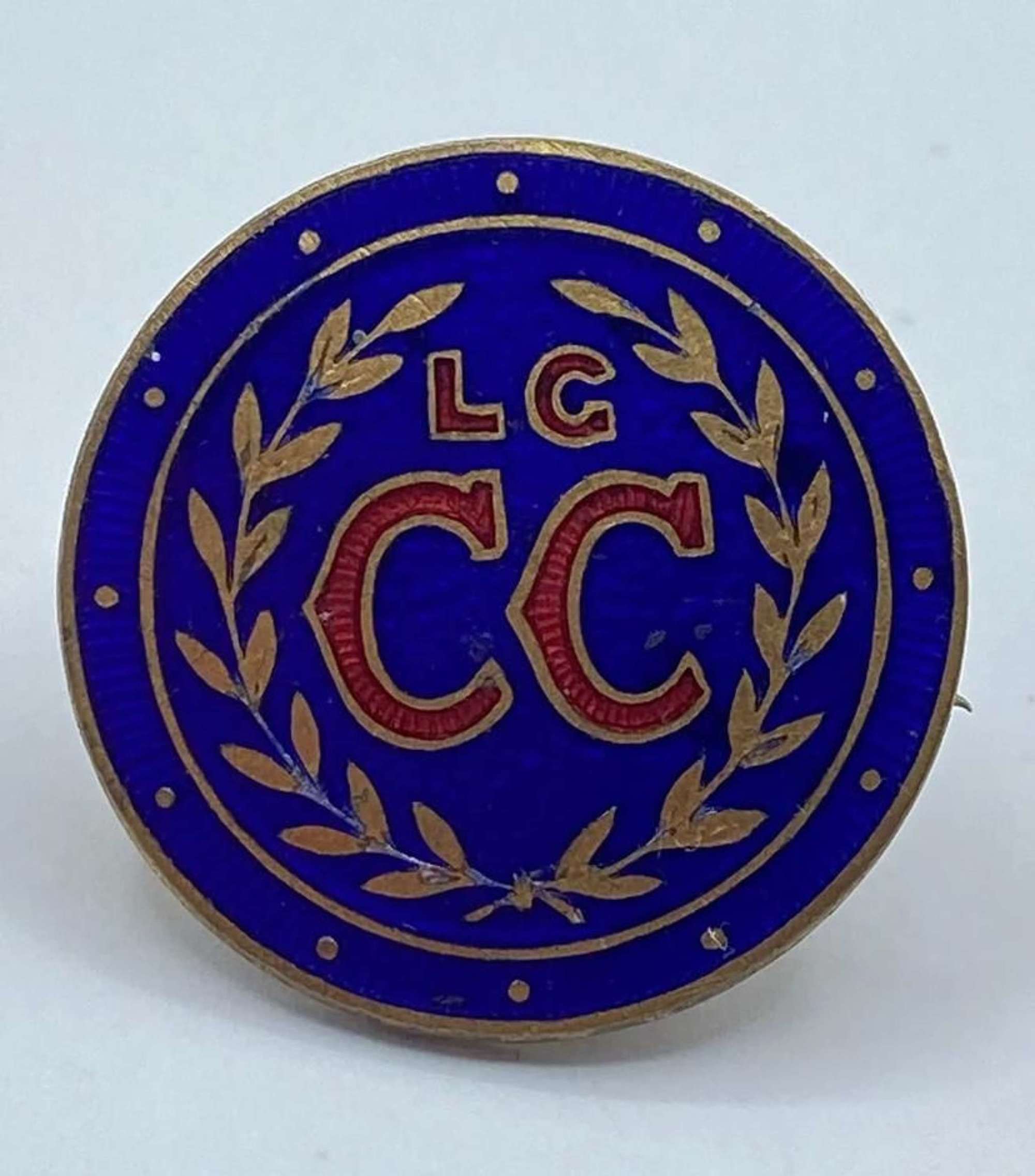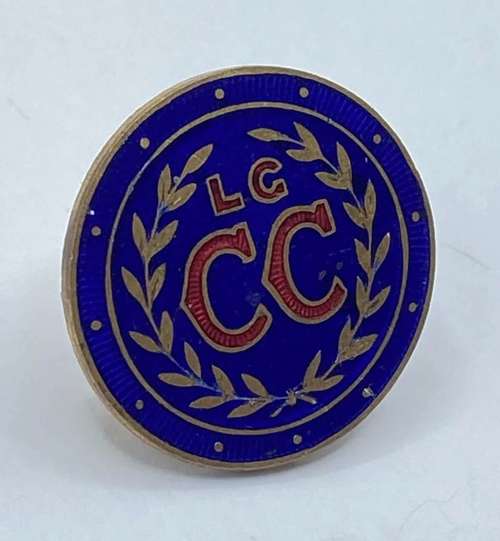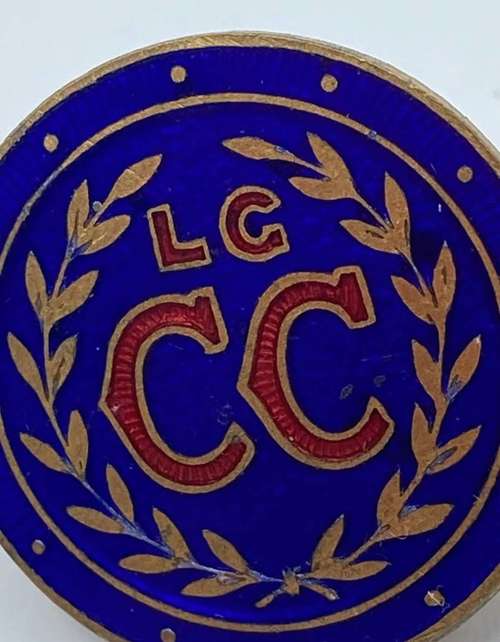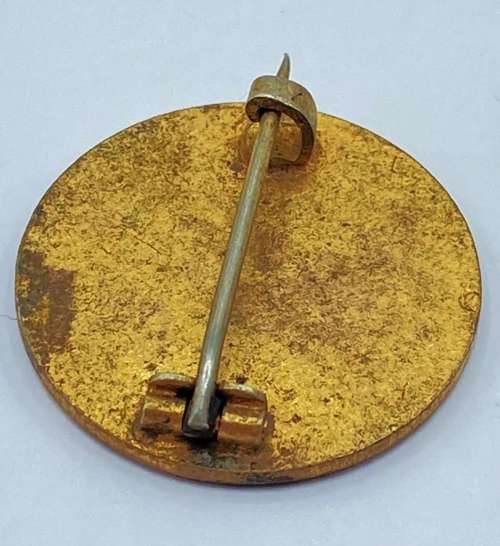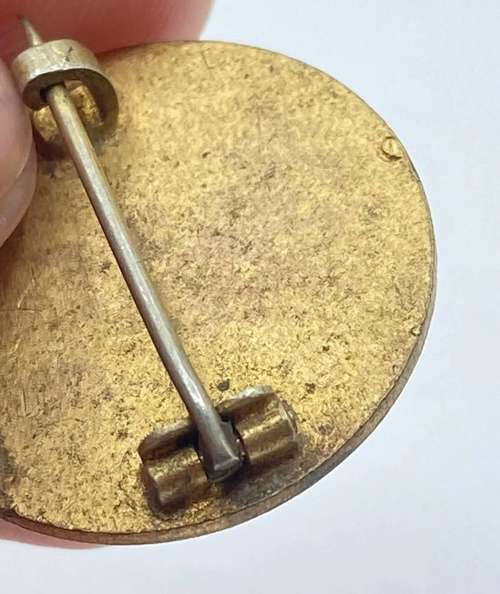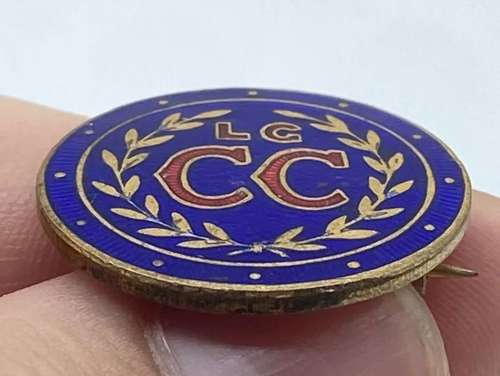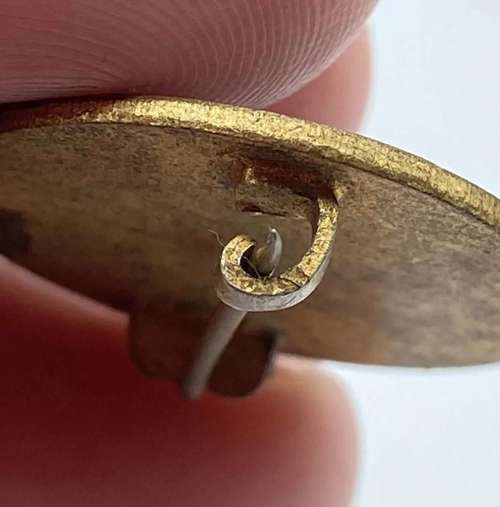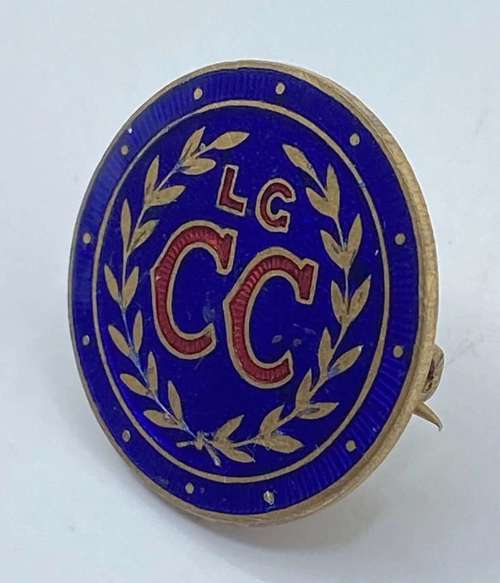WW2 Period Salvation Army Cadets Corps Lower Grade Enamel Badge
Delivery Quote Request
Please fill in the form below to request a delivery quote from Atlas Antiques.
Contact Atlas Antiques
 Dorset, United Kingdom
Dorset, United Kingdom
Simply fill in the below form to get in touch with Atlas Antiques regarding this item.
About this item
For sale is a Rare WW2 Period Salvation Army Cadets Corps Lower Grade Enamel Badge. In the photographs are also a scan of a Salvation Army catalog showing an illustration of this badge. The badge is in good condition but has no maker marks.
War and training for war are draining physical, psycho-logical, and emotional experiences. During both world wars and throughout the Cold War, the Salvation Army provided Canadian military personnel overseas and in Canada with comforts such as hot drinks and snacks and helped maintain morale by establishing leave centres for rest and recreation. The Salvation Army tried to establish a degree of civility amidst the loneliness and dehumanizing conditions of war – to offer a ‘touch of home’, perhaps. To a remarkable degree, the Salvation Army formed an integral part of Canadians’ military experiences for most of this century. The Salvation Army maintained morale on the home front with a strong presence at Canadian military installations and in major urban areas and by assisting the families of those in uniform. Closer to the battle front, the Salvation Army showed films, organized sporting events, and provided reading material, cigarettes and other items which the troops greatly appreciated. The Salvation Army also offered spiritual guidance and personal counselling to all military personnel seeking it. During the First World War (1914-18), the Canadian Salvation Army’s overseas activities were part of the much larger effort organized by British Salvationists. The latter established over 200 recreational huts (often no more than tents), 40 rest homes, and 96 hostels, all staffed by more than 1200 volunteers. The Canadian Salvation Army sent five military chaplains to the front and helped operate well-equipped huts, canteens, rest facilities, and hostels in Britain, France and Belgium. There, war-weary troops could bathe, refresh their clothing, eat decent food, and prepare themselves physically, mentally, and spiritually for the always difficult return to the trenches. Closer to the front, more Salvation Army officers provided refreshments and amenities, often under dangerous conditions. As Canadian soldier Will Bird wrote in his classic war memoir, Ghosts Have Warm Hands: “Every front-line soldier of World War I knew that his true friend was the man in the Salvation Army canteen.” The troops coined the affectionate nickname ‘Sally Ann’ to describe the Salvation Army while the familiar Red Shield logo – the emblem of its war efforts – also dates from this period. In Canada, the Salvation Army Home League raised funds and sent tens of thousands of comfort packages containing socks, underwear, Christmas presents, and other items directly to the Salvation Army chaplains for distribution to Canadian troops. Salvationists also visited the homes of departed soldiers to look into the welfare of their dependants and comforted many bereaved families. The Salvation Army’s most visible wartime effort was assisting repatriated soldiers. In 1918, it organized its first nation-wide appeal for funds to assist returning soldiers in the hectic and often disorienting days following their discharge. Within a year, the organization raised enough money to open a number of hostels across Canada – in Toronto, Montreal, Winnipeg, Halifax, Kingston, and elsewhere – each offering a quiet retreat, especially for soldiers on their way home or awaiting demobilization at war’s end. The more than $1.5 million collected astounded Salvation Army officials, whose good works during the war had not gone unnoticed by the Canadian public. War with Germany broke out again in September 1939. In November, Ottawa accorded the Salvation Army official status as a Canadian War Auxiliary Service, a distinction also awarded the Canadian Legion, the Young Men’s Christian Association, and the Knights of Columbus. The Salvation Army’s war efforts were again known collectively as the Red Shield services. A government Memorandum of Understanding stipulated that all these organizations’ wartime services would be non-profit and that none could act autonomously to dispense war-related assistance. The Salvation Army understood that Ottawa’s co-ordination of all Auxiliary War Services would eliminate duplication of effort in matters affecting military welfare. In 1942, each group agreed to specialize in certain fields, with the Salvation Army assuming responsibility for canteens and the showing of films. Each organization initially raised its own funds to finance their auxiliary work. However, by April the federal government concluded that such private fund-raising siphoned off amounts it hoped to raise from the sale of Victory Bonds. Accordingly, Ottawa decided to finance these groups’ activities directly, which henceforth the Department of National War Services administered. Nevertheless, it remained for Salvation Army supervisors to dispense Red Shield services to the troops. The Salvation Army selected these men for their resourcefulness, initiative, moral conduct, and good physical condition. Overseas, supervisors’ jobs varied according to the theatre of operations and the individual service to which they were attached. Their responsibilities included screening films, establishing canteens, organizing recreational activities such as concerts or sporting events, providing reading material and stationery, comforting the wounded, or even helping bury the dead. In short, they did whatever was necessary to help maintain military morale. The Salvation Army instructed its supervisors to “care for the body, mind and soul of every [service person] irrespective of. creed or personality.” As Salvation Army historian Scott Young has written, the Salvation Army “provided the reassuring link between the fighting man and his world of peace and kindness and sanity.” Red Shield supervisors retained their status as civilians but held military rank equivalent to an army captain. In 1940, Ottawa issued each the uniform (minus rank insignia) of their respective service and units with the addition of Red Shield and Auxiliary War Services badges. The supervisors, who possessed no military command authority, were managed overseas by a senior supervisor reporting to a force director who, in turn, answered to the Salvation Army’s war services secretary in Canada. The latter obtained his directions from the Auxiliary Services division of the Department of National War Services. Alf Steele, the first Red Shield Director, went overseas in December 1939 and established Salvation Army head-quarters in London. Within a month, five additional supervisors had joined him in assisting the growing number of Canadian troops sent to Britain. The Salvation Army opened its first overseas hut at Aldershot, where the Canadians underwent training, and in May 1940 established leave accommodation for the men in London at the former West Central Hotel. There, soldiers could obtain a bed, breakfast, and bath for less than 50 cents a night. More huts, clubs, hostels, and leave centres soon followed. During Canadian training exercises in Britain, the Salvation Army’s mobile canteens supplied tired men with coffee, donuts, chocolates, and cigarettes. By early 1944, 70 Red Shield supervisors operated 30 centres and 55 mobile canteens in support of Canadian army and air force units. Moreover, the Salvation Army film service’s 375 projectors in Britain showed two complete programs weekly. The Salvation Army rest camp for the Royal Canadian Navy in Northern Ireland had one unforeseen but welcome consequence: a local magistrate noted that following the establishment of the facility, the number of Canadian sailors appearing before Londonderry courts dropped 50 per cent! In July 1943, Canadian troops participated in the Allied invasion of Sicily. Salvation Army supervisors accompanied them. Fifteen were assigned to help alleviate the Canadians’ stressful experience of sustained combat, including three who landed almost immediately after the initial assault. When, in early September, the Allies invaded the Italian mainland, Red Shield supervisors again quickly followed, establishing a Red Shield Club, a hostel, and canteens at Campobasso. As more Canadian forces arrived in Italy, eight additional Salvation Army supervisors came with them. In the town of Riccione, on the Adriatic coast, the Grand Hotel became a rest facility accommodating 500 men with the luxury of comfortable mattresses, meals served on china dishes, and a working elevator. In June 1944, the Allies began the liberation of Northwest Europe by invading Normandy, France. Within days of the initial assault, the first of 40 Red Shield supervisors to serve in Northwest Europe were ashore; they showed their first film to the exhausted men just five days after the invasion. Salvation Army supervisors spread heavy tarps over the holed roofs and shattered walls of damaged buildings, proclaimed the sites ‘movie theatres’, and welcomed hundreds of fatigued Canadians in need of a laugh or distraction. Eventually, the Salvation Army set up recreational facilities in large urban centres, such as Nijmegen and Brussels, after their liberation by Allied forces. The Red Shield men followed the unit (normally battalion-sized) to which they were attached, identifying with it and getting to know the men. By this stage of the war, each supervisor was equipped with a large truck carrying a portable generator, movie projector, turntable, radio, sports equipment, games, and canteen supplies. Two military personnel were assigned to each supervisor as assistants. Until 1944, the Red Shield effort was greater in Canada than overseas. The work closely resembled that undertaken during the First World War: setting up facilities at or near Canadian military installations, sending packages of comforts overseas (a task undertaken by the Salvation Army Women’s Auxiliary), and looking in on the families of Canadians away on active service. By 1945, the Salvation Army had established a coast-to-coast network of 165 centres, huts, hostels, and canteens. In all, Red Shield services in Canada and overseas cost $21 million and provided Canadians with more than 270 million sheets of writing paper and envelopes, 38 million hot beverages from mobile canteens, and 35 million meals served in huts and hostels. More than 68 million people attended Salvation Army films and concerts. Over 200 Salvation Army supervisors served overseas, the last one not returning home until December 1946. In an official letter of thanks following the end of the war in Europe, General Harry Crerar, former commander of First Canadian Army, wrote: “It would be easier to forget one’s name than fail to remember the times without number when the Salvation Army was, in truth, our comforter and friend.” This will be sent via Royal Mail 1st class signed for and dispatched within two working days.Disclaimer: Items related to the Nazi regime or the Third Reich sold by dealers on this platform are intended solely for educational, historical, or TV/film prop purposes. Militaria Zone does not promote, and is strongly against, the hate ideologies and atrocities committed during WWII.
The law regarding sales of items like this vary depending which country you are in. If in doubt, please check the law in your country.
Additional Information
![]() Dorset, United Kingdom
Dorset, United Kingdom
Atlas Antiques Promises You - Fresh stock weekly - Fair & affordable prices - Everything listed is original, money back guaranteed. (Unless marked fantasy or reproduction). - Fast responses and delivery's made within 2-3 working days. Atlas Antiques only handles items in terms of...

